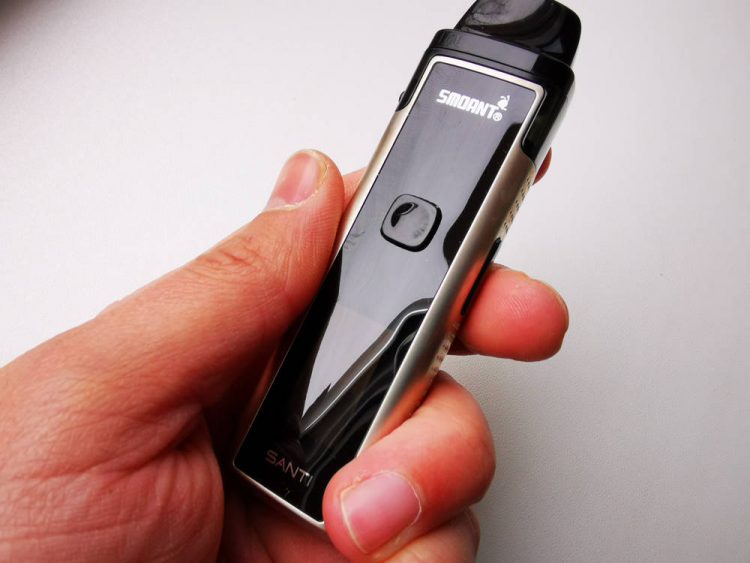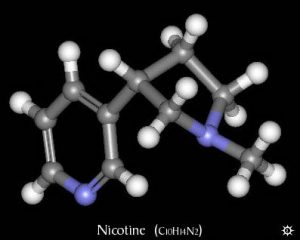Do E-Cigarettes Contain More Nicotine Than Tobacco Cigarettes?
Nicotine levels, whether in cigarettes or in e-liquid, has always been a rather complicated subject, both because they can vary greatly by brand, and because the amount of nicotine contained by these products is not the same as the amount assimilated by the human body.
How Much Nicotine Is in a Cigarette?
That’s a really tough question to answer, because the nicotine content varies by brand and type of cigarettes (light, 100s, etc.). You can find the nicotine levels listed on the packaging, but the bottom line is that they can vary greatly. With so many brands of cigarettes, it’s hard to even come up with an average amount of nicotine per cigarette, but there have been studies done by the CDC and others, where several known brands were compared. For example one study found that the mean nicotine content per brands tested was 19.2 mg per gram of tobacco. The average unlit cigarettes contains between 0.65 and 1 gram of tobacco.
Photo: markusspiske/Pixabay
A separate study found that the average nicotine content per cigarette, out of all the brands tested, was 10.2 mg per cigarette. This only shows how hard it is to estimate just how much nicotine a cigarette actually contains. But the good news is that this isn’t the most important question you should ask. What you should really care about is how much nicotine your body absorbs when you smoke or vape.
When it comes to assimilated nicotine, scientists agree that it’s certainly less than the nicotine contained by either tobacco cigarettes or e-liquid. A 2013 study by Prof. Berndt Mayer, of the Department of Pharmacology and Toxicology at Karl-Franzens University Graz, in Austria, showed that the amount of nicotine absorbed from a single tobacco cigarette is about 2mg. While that may vary by cigarette and user, it clearly shows that the amount of nicotine contained is different from what is assimilated by the human body.
How Much Nicotine Is in an Electronic Cigarette?
One thing I should point out immediately is that, despite what you may have read in the news, electronic cigarettes do not contain more nicotine than tobacco cigarettes. A 2020 study from UCSF San Francisco claimed that the JUUL delivered substantially more nicotine than cigarettes (5.2 times more) and previous generations of e-cigs (up to 8 times more), but that isn’t supported by other research.
A JUUL pod, which should last users the equivalent of a pack of conventional cigarettes, contains 41mg of nicotine, while a packs of tobacco cigarettes contains at least 200 mg (20 cigarettes x 10 mg nicotine), with some studies showing they can contain up to double that amount. And while the JUUL contains nicotine salts, which are more easily absorbed by the human body, they aren’t nearly as perfected as the nicotine formulations in tobacco.
As you may already know, apart from nicotine, cigarette tobacco contains many other chemicals designed to make them more desirable and addictive to the user. Monoamine oxidase inhibitors(MAOI), for example, make smokers crave nicotine more often, while the ammonia boosts the effect of nicotine, making it even more addictive.
Whether containing nicotine salts or freebase nicotine, electronic cigarettes do not have these “boosting” compounds, so even if they were to contain more nicotine, which they don’t, they still wouldn’t have the same effect as tobacco cigarettes.
Just like with tobacco cigarettes, the nicotine content in electronic cigarettes can vary. It can range from nicotine-free e-liquid, to tens of milligrams per milliliter of e-liquid. The nicotine content could, in theory, go up even higher, even all the way to 100% nicotine, but that would make the e-liquid unvapable. Which leads us to the really important aspect of nicotine dosing – self-titration.
Why Nicotine Content Doesn’t Really Matter
Have you ever heard of someone overdosing on nicotine, either from smoking or vaping? It’s a really hard thing to pull off, even if you’re actively striving for it, because you are essentially fighting against your own body.
Whenever the nicotine levels in your system go over a certain threshold, you start to experience poisoning-like symptoms, like dizziness, headache, nausea, cold sweats, increased heart rate. So continuing to ingest nicotine in these conditions, means you have to do so while going through all these nasty symptoms, which is virtually impossible.
I remember accidentally vaping 36mg/ml nicotine e-liquid in a sub-ohm tank, and getting incredibly sick after just two puffs. The world started spinning, I got cold sweats, felt like vomiting my lunch, so I instantly stopped vaping. Nicotine overdose is not something that can creep up on you, when it occurs, you feel it, and you have to stop ingesting the stuff.
Self-titration is basically our brain telling us when we need more nicotine or when we’ve had enough. It occurs in both smokers and vapers, and it’s what makes nicotine content irrelevant. If your e-liquid contains a higher nicotine concentration, you’ll just vape less of it until your brain lets you know that you need more. If you overdo it, your body will tell you that you need to stop through the symptoms I mentioned before.
Nicotine Addiction
Nicotine is one of the most addictive substances known to man, but we’ve known that tobacco companies actually super-charge nicotine with monoamine oxidase inhibitors, ammonia, sugar and other ingredients, for decades. Basically, the nicotine in tobacco cigarettes is more addictive than the freebase nicotine and nicotine salts used in electronic cigarettes.
That’s not to say that nicotine-containing e-cigs aren’t addictive, they definitely are, but in comparison to tobacco cigarettes, the nicotine they contain doesn’t have the same effect as that in tobacco cigarettes.
Conclusion
Electronic cigarettes do not contain more nicotine that tobacco cigarettes, but because of self-titration, you probably shouldn’t care about nicotine content anyway. What is important is the addictiveness of the nicotine used, and research has shown that cigarette nicotine is chemically enhanced to make it even more desirable and addictive that regular nicotine.
That said, there are plenty of worse things in tobacco smoke than nicotine, so that should probably be your last last concern. Things like carbon monoxide, tar and dangerous levels of about 7,000 other compounds are the ones you should be concerned about if you are a smoker and care about your health.



















